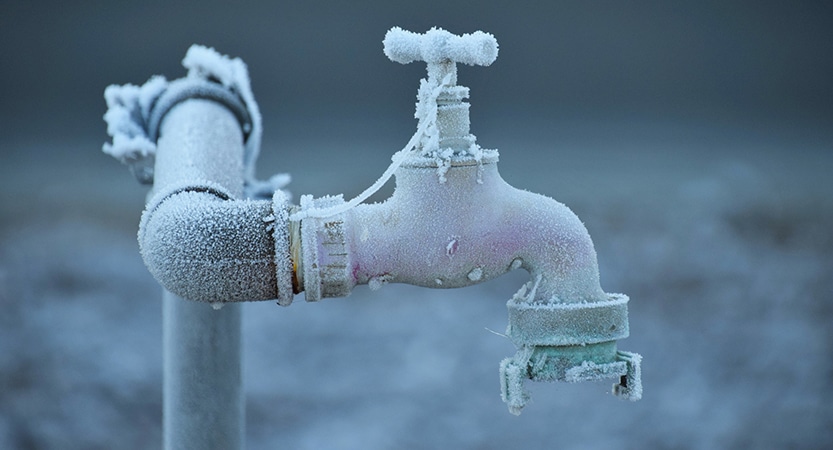Advice for Preventing Frozen Plumbing in Winter: Specialist Advice
Advice for Preventing Frozen Plumbing in Winter: Specialist Advice
Blog Article
What're your beliefs about Winter Plumbing Precautions: Preventing Frozen Pipes?

Cold weather can ruin your pipes, particularly by freezing pipes. Below's exactly how to stop it from occurring and what to do if it does.
Introduction
As temperature levels drop, the danger of frozen pipes rises, potentially bring about costly fixings and water damage. Comprehending how to avoid icy pipelines is crucial for property owners in cool climates.
Prevention Tips
Protecting at risk pipes
Wrap pipes in insulation sleeves or utilize warmth tape to protect them from freezing temperatures. Focus on pipelines in unheated or exterior areas of the home.
Heating techniques
Keep interior areas effectively warmed, specifically locations with pipes. Open up cupboard doors to enable warm air to distribute around pipes under sinks.
How to identify icy pipelines
Seek lowered water circulation from faucets, unusual smells or sounds from pipes, and noticeable frost on subjected pipes.
Long-Term Solutions
Structural changes
Take into consideration rerouting pipes away from outside walls or unheated areas. Include additional insulation to attics, basements, and crawl spaces.
Updating insulation
Purchase top quality insulation for pipelines, attics, and wall surfaces. Appropriate insulation helps keep consistent temperature levels and decreases the threat of frozen pipelines.
Protecting Exterior Plumbing
Yard tubes and outside taps
Detach and drain yard hose pipes prior to wintertime. Set up frost-proof faucets or cover exterior faucets with protected caps.
Recognizing Frozen Pipes
What triggers pipelines to ice up?
Pipes freeze when subjected to temperature levels listed below 32 ° F (0 ° C) for extended periods. As water inside the pipes freezes, it broadens, taxing the pipeline wall surfaces and possibly creating them to break.
Threats and problems
Icy pipelines can bring about water supply disruptions, residential property damages, and costly repair services. Burst pipelines can flood homes and trigger comprehensive structural damages.
Indicators of Frozen Water Lines
Determining frozen pipelines early can avoid them from bursting.
What to Do If Your Pipes Freeze
Immediate activities to take
If you believe frozen pipes, maintain faucets open to soothe pressure as the ice thaws. Utilize a hairdryer or towels soaked in warm water to thaw pipes gradually.
Conclusion
Protecting against icy pipes calls for positive actions and quick feedbacks. By comprehending the reasons, signs, and safety nets, homeowners can secure their pipes during winter.
5 Ways to Prevent Frozen Pipes
Drain Outdoor Faucets and Disconnect Hoses
First, close the shut-off valve that controls the flow of water in the pipe to your outdoor faucet. Then, head outside to disconnect and drain your hose and open the outdoor faucet to allow the water to completely drain out of the line. Turn off the faucet when done. Finally, head back to the shut-off valve and drain the remaining water inside the pipe into a bucket or container. Additionally, if you have a home irrigation system, you should consider hiring an expert to clear the system of water each year.
Insulate Pipes
One of the best and most cost-effective methods for preventing frozen water pipes is to wrap your pipes with insulation. This is especially important for areas in your home that aren’t exposed to heat, such as an attic. We suggest using foam sleeves, which can typically be found at your local hardware store.
Keep Heat Running at 65
Your pipes are located inside your walls, and the temperature there is much colder than the rest of the house. To prevent your pipes from freezing, The Insurance Information Institute suggests that you keep your home heated to at least 65 degrees, even when traveling. You may want to invest in smart devices that can keep an eye on the temperature in your home while you’re away.
Leave Water Dripping
Moving water — even a small trickle — can prevent ice from forming inside your pipes. When freezing temps are imminent, start a drip of water from all faucets that serve exposed pipes. Leaving a few faucets running will also help relieve pressure inside the pipes and help prevent a rupture if the water inside freezes.
Open Cupboard Doors
Warm your kitchen and bathroom pipes by opening cupboards and vanities. You should also leave your interior doors ajar to help warm air circulate evenly throughout your home.

Hopefully you enjoyed our section about How to prepare your home plumbing for winter weather. Thanks a lot for taking the time to read our blog. You should set aside a second to distribute this content if you enjoyed it. We appreciate your readership.
Get A Free Quote Report this page